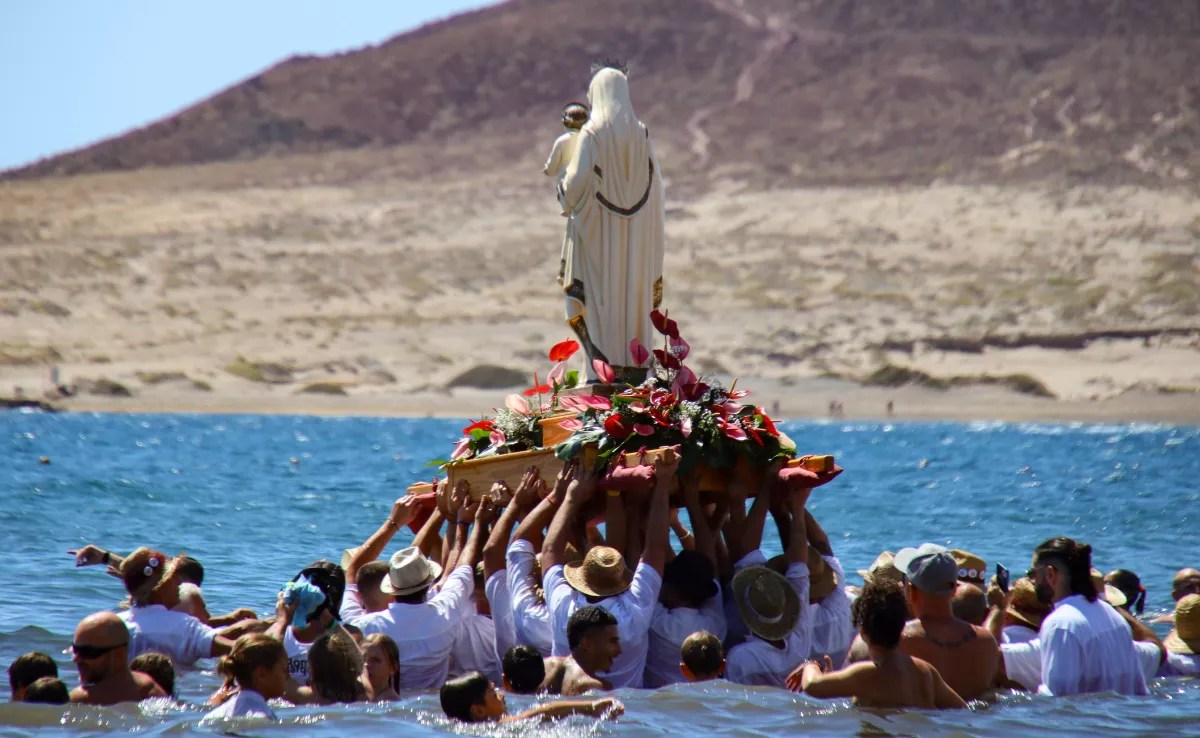Broken windows, boarded up doors, peeling paint, and rusted fencing. This is what Isabel Herrera, a resident of Punta del Hidalgo, sees every day from her home, observing the current state of the replica of La Torre del Conde. “Before, people used to come here to take photos for weddings and communions, now there are only cats,” she explains. The building was closed after the pandemic, and although many tourists still come to see it from outside, it is completely abandoned. “Even before it was fenced off, there was someone living at the back,” she reveals.
A nearly identical replica of the famous Torre del Conde in San Sebastián de La Gomera rests in the coastal area of San Cristóbal de La Laguna. It is located on the edge of the TF-13 main road, in the town of Punta del Hidalgo. The tower house officially became public property in 2022. Both the City Council and the residents celebrated the handover as a major achievement, as stated by the mayor of La Laguna, Luis Yeray Gutiérrez, who mentioned that the municipality gained “a space of enormous interest and possibilities for the development of activities and events that will enrich the leisure offer”. However, over the years, the neglected building has not been assigned any specific function.
Cirilo Melián, a resident of La Punta and member of the Aguacada Neighbours Association, asserts that the City Council had plans to restore the infrastructure and set up an exhibition hall, but so far, the tower house remains closed, revealing only its exterior facade. He denounces the “completely abandoned state” in which the site finds itself, with no improvements made since the property was handed over to the public institution by the family.
Adolfo Cordobés, the councillor for Cultural Heritage, ensures that the City Council, through this department, is committed to the restoration of the building and its use as a cultural facility. He emphasizes that “always taking into account the consensus of the residents of Punta del Hidalgo”. Before deciding on any action, municipal technicians conduct an assessment of the interior condition of the building. “Thus, during this year, we will be able to evaluate which interventions are necessary for its operational use,” he explains. Once this assessment is completed, he adds, the necessary reforms will be carried out after consulting the Municipal Council of Cultural Heritage, and “its use will be tailored to the conditions of such a representative building in this Lagunero enclave“.

Current state of the Punta del Hidalgo tower house / Isabel Herrera
The history of the replica is linked to that of the first Lady of Canarias, Inés Peraza de Ayala, daughter of Hernán Peraza the Elder. Her father, the Count of La Gomera, commissioned the construction of the original tower between 1447 and 1450, to accommodate and shelter illustrious figures such as Christopher Columbus, Amerigo Vespucci, and Hernán Cortés. Inés wanted to replicate her father’s property in La Laguna, so in 1961, she commissioned a replica from Julián Méndez Herrera, using only an old photograph from the island where the original tower stands.
Inés Peraza’s intention was for the tower house in Punta del Hidalgo to become municipal property, as stated in her will. The request was approved by the City Council in September 2004, but it was not realized until 2022 due to the need for a land plot segregation. Peraza’s legacy covers 425 square meters, of which only 59.55 belong to the building, with the rest comprising access paths and gardens.
Donation from Inés Peraza
The former councillor for Finance and Economic Services, Alejandro Marrero, stated that “the process to complete the donation by Doña Inés Peraza has been complicated by the urban situation of the plot, but we have managed to find a solution so that the wishes of the testator are not delayed any further”. Although in December 2020, the City Council received the keys to the building from the executor to use it without lease costs and assume maintenance expenses, he explained that the City Council could not assume ownership because the land was part of an urban action unit under replotting. At that time, one of the options being considered was the establishment of a museum with an exhibition hall.
The distinctive facade of white lime with red stonework, for now, is nothing more than that. An eye-catching exterior and a tourist attraction that hides the history of one of the last great landowners in all of the Canary Islands.














